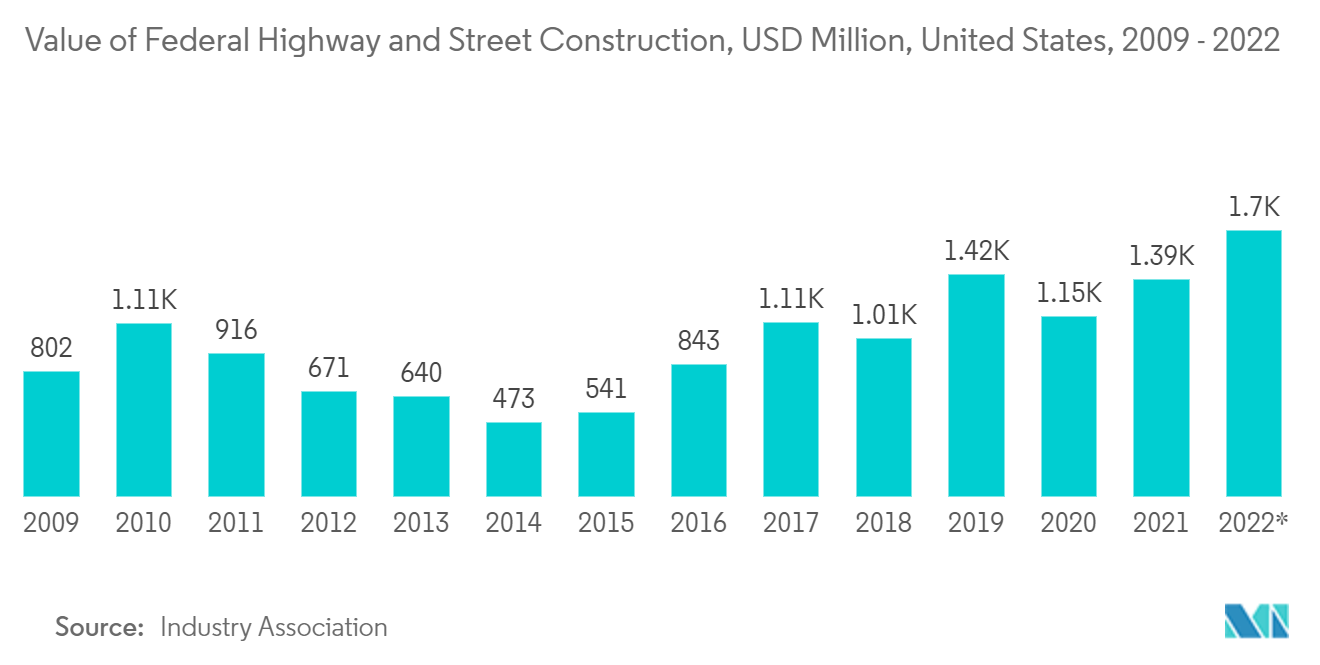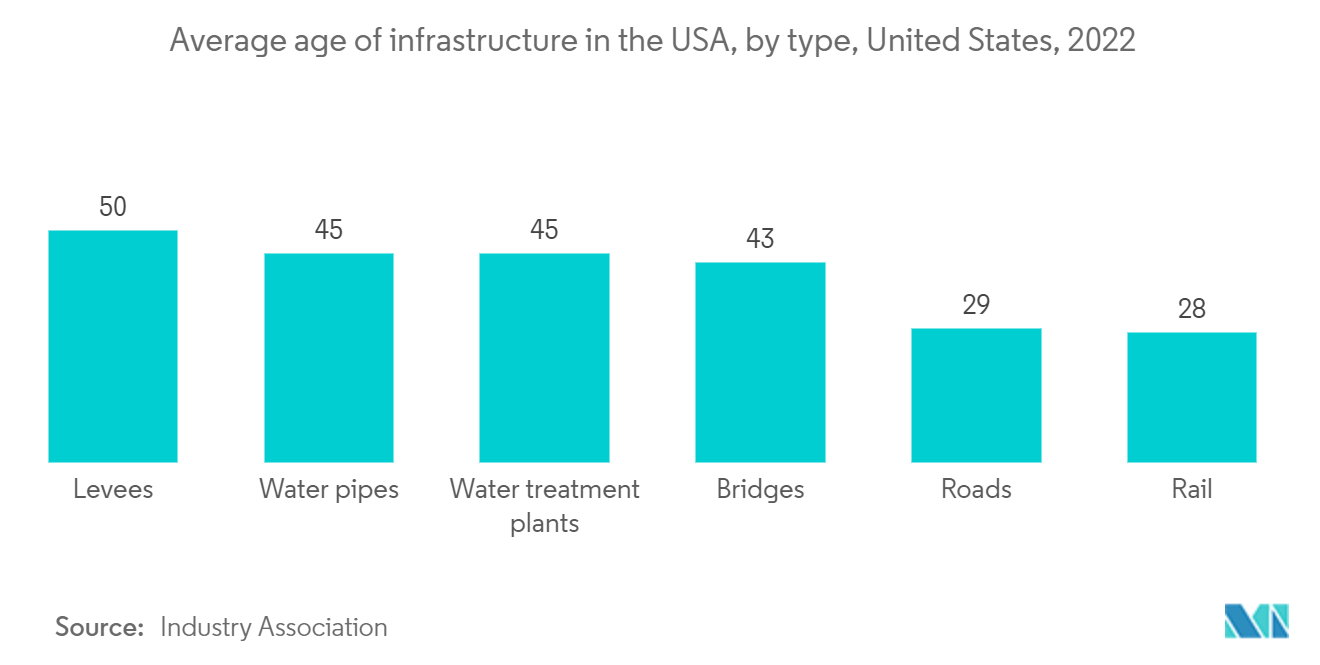Market Trends of United States Transportation Infrastructure Construction Industry
Government Initiatives for Infrastructural Development to Boost the Market
Bipartisan Infrastructure Act provides substantial new funding for Federal Highway Administration (FHWA) and Department of Transportation (DOT) roadways, bridges, and other critical infrastructure projects. The bill sets aside USD 40 billion for bridge construction. The Bridge Investment Initiative (BII) is a competitive program for replacing, restoring, preserving, or protecting some of the nation’s most critical and economically significant bridges. The BII will receive USD 12,5 billion under the BII. The remaining funds come from the BII Bridge Formula Program (BFP). The BFP allocates a certain amount of funds to states for replacing, rehabilitating, conserving, protecting, and constructing bridges on public roads.
The bipartisan Infrastructure Law invests USD 91.2 billion in repairing and modernizing transit. The law promotes expanded public transportation options across the country by replacing thousands of substandard transit vehicles (including buses) with clean, zero-emissions vehicles and improving access for seniors and disabled people. The Federal Transit Administration (FTA) Reauthorization and Supplemental Appropriations (USD 21.3 billion) are the primary sources of transit funding. Capital Investment Grants (CIGs) from the FTA fund new and improved high-capacity trains and buses. The program includes New Starts (build new systems or extend existing ones), Small Starts (costs less than USD 400 million), and Core Capacity (improves existing corridors to meet growing demand).

Growth in Airports Infrastructure Market
The U.S. led the way in the development of modern aviation, but many of our nation’s airports are lagging behind their international peers. According to some rankings, none of America’s airports rank in the top 25 worldwide airports. The money is divided into three main programs: Facilities and Equipment funding – USD 5 billion, Airport Infrastructure Grant Program – USD 15 billion, and Airport Terminal Program – USD 5 billion. Thousands of airports nationwide receive grants to fund a wide range of maintenance and modernization projects through the Airport Infrastructure grant program (for example, runways & taxiways, Noise, Multimodal, Terminal buildings, etc.). The proposal also includes a competitive USD 100M (USD 20M per year) grant for Airport-owned contract Airport traffic control towers. The Bipartisan infrastructure law gives municipal airports discretionary funds to support certain critical needs.
At the end of the 5th year, unbound funds are available for the competitive discretionary grant program. The discretionary program’s first USD100 million will likely be used to fund airport-owned contract airports’ traffic control towers. The remaining USD100 million will support initiatives that reduce airport emissions, noise, reliance on the electrical grid, or provide community benefits. The Airport Enhancement Program (AEP) and the Supplemental Discretionary Program (SDP) each provide approximately USD 3.75 billion in capital improvement projects at eligible U.S. airports each year.

